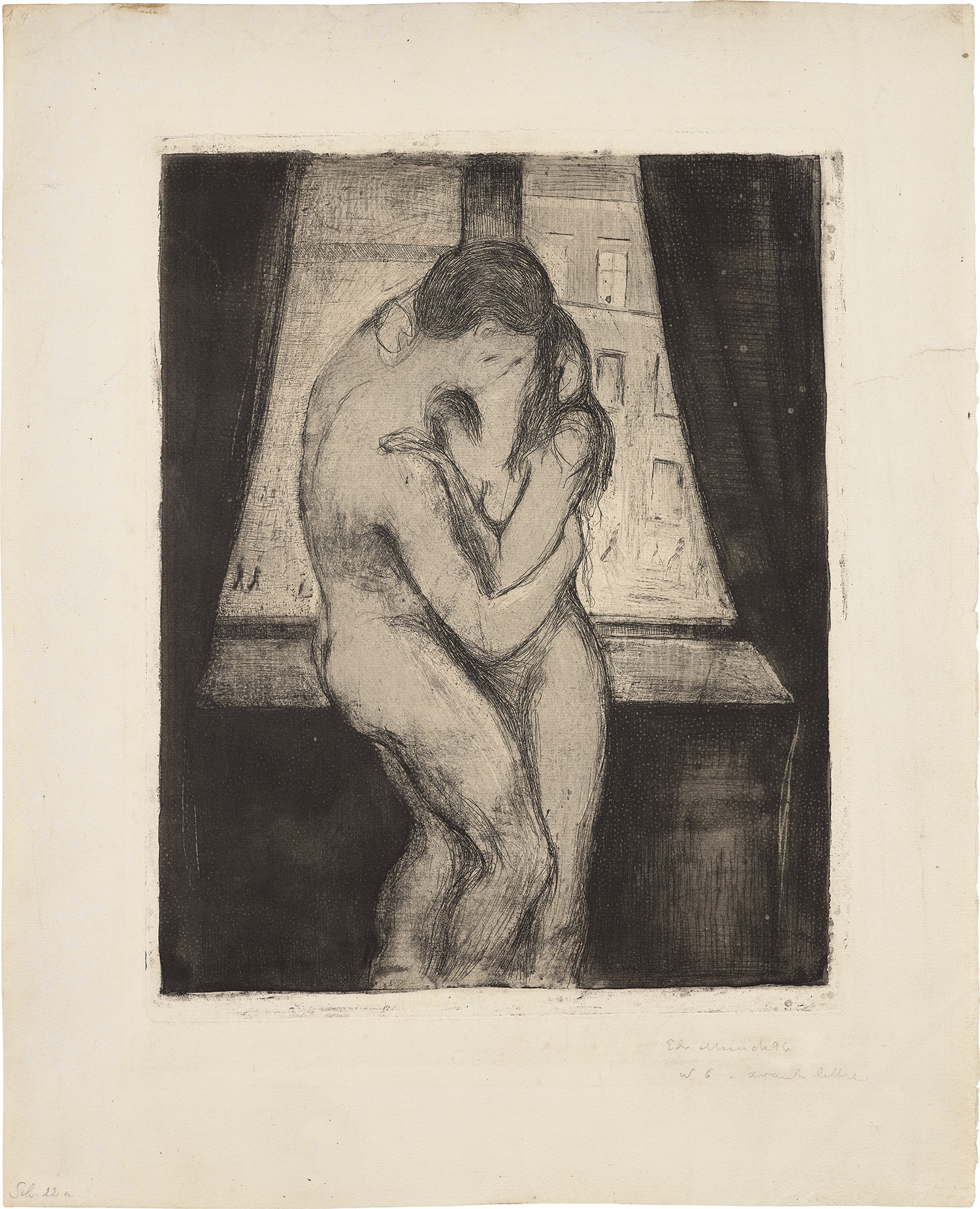



38
Edvard Munch
Der Kuss, Kyss (The Kiss) (W. 23, Sch. 22)
1895
Etching with drypoint, burnisher and open bite, on laid paper with interlaced initials ‘JMG’ watermark, with margins.
I. 12 7/8 x 10 1/8 in. (32.7 x 25.7 cm)
S. 18 1/2 x 14 7/8 in. (47 x 37.8 cm)
S. 18 1/2 x 14 7/8 in. (47 x 37.8 cm)
Signed 'Edv Munch', dated '96' and inscribed 'N 6 avant lettre' in pencil, only a few early proofs are recorded, Wool's state a (of c), printed by Sabo or Angerer, framed.